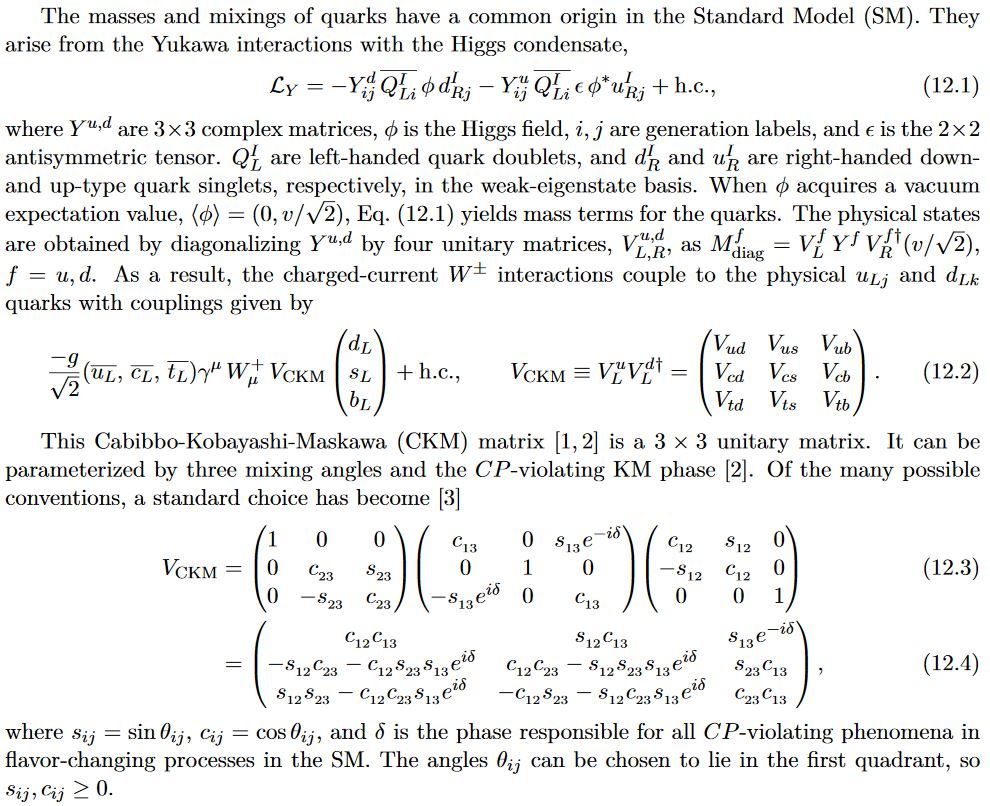nLab CKM matrix
Context
Fields and quanta
fields and particles in particle physics
and in the standard model of particle physics:
matter field fermions (spinors, Dirac fields)
| flavors of fundamental fermions in the standard model of particle physics: | |||
|---|---|---|---|
| generation of fermions | 1st generation | 2nd generation | 3d generation |
| quarks () | |||
| up-type | up quark () | charm quark () | top quark () |
| down-type | down quark () | strange quark () | bottom quark () |
| leptons | |||
| charged | electron | muon | tauon |
| neutral | electron neutrino | muon neutrino | tau neutrino |
| bound states: | |||
| mesons | light mesons: pion () ρ-meson () ω-meson () f1-meson a1-meson | strange-mesons: ϕ-meson (), kaon, K*-meson (, ) eta-meson () charmed heavy mesons: D-meson (, , ) J/ψ-meson () | bottom heavy mesons: B-meson () ϒ-meson () |
| baryons | nucleons: proton neutron |
(also: antiparticles)
hadrons (bound states of the above quarks)
minimally extended supersymmetric standard model
bosinos:
dark matter candidates
Exotica
Contents
Idea
In the standard model of particle physics, the CKM matrix, arising from diagonalizing the Yukawa couplings, measures the interaction of the quarks via W-bosons and hence via the weak nuclear force.
Definition
From PDG 18:

Observation and anomaly
See at
Related concepts
References
-
Particle Data Group Review 2018, 12. CKM Quark-Mixing Matrix (pdf)
-
Sébastien Descotes-Genon, Patrick Koppenburg, The CKM Parameters, Annual Review of Nuclear and Particle Science Vol 67:97-127, 12 October 2017 (arXiv:1702.08834)
See also
- Wikipedia, Cabibbo-Kobayashi-Maskawa matrix
Last revised on May 14, 2025 at 04:27:15. See the history of this page for a list of all contributions to it.